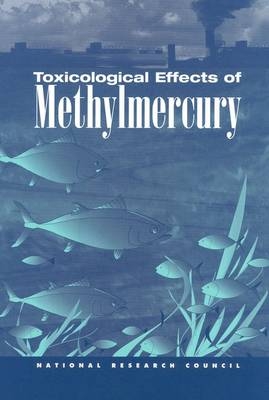
Toxicological Effects of Methylmercury
Seiten
2000
National Academies Press (Verlag)
978-0-309-07140-6 (ISBN)
National Academies Press (Verlag)
978-0-309-07140-6 (ISBN)
Reviewing the health effects of methylmercury, this work discusses the estimation of mercury exposure from measured biomarkers, how differences between individuals affect mercury toxicity, and appropriate statistical methods for analysis of the data and thoroughly compares the epidemiological studies available on methylmercury.
Mercury is widespread in our environment. Methylmercury, one organic form of mercury, can accumulate up the aquatic food chain and lead to high concentrations in predatory fish. When consumed by humans, contaminated fish represent a public health risk.
Combustion processes, especially coal-fired power plants, are major sources of mercury contamination in the environment. The U.S. Environmental Protection Agency (EPA) is considering regulating mercury emissions from those plants.
Toxicological Effects of Methylmercury reviews the health effects of methylmercury and discusses the estimation of mercury exposure from measured biomarkers, how differences between individuals affect mercury toxicity, and appropriate statistical methods for analysis of the data and thoroughly compares the epidemiological studies available on methylmercury. Included are discussions of current mercury levels on public health and a delineation of the scientific aspects and policy decisions involved in the regulation of mercury.
This report is a valuable resource for individuals interested in the public health effects and regulation of mercury. The report also provides an excellent example of the implications of decisions in the risk assessment process for a larger audience.
Table of Contents
Front Matter
Executive Summary
Introduction
Chemistry, Exposure, Toxicokinetics, and Toxicodynamics
Biological Variability
Dose Estimation
Health Effects of Methylmercury
Comparison of Studies for Use in Risk Assessment
Dose-Response Assessment
Risk Characterization and Public Health Implications
Appendix to Chapter 7
Glossary
Mercury is widespread in our environment. Methylmercury, one organic form of mercury, can accumulate up the aquatic food chain and lead to high concentrations in predatory fish. When consumed by humans, contaminated fish represent a public health risk.
Combustion processes, especially coal-fired power plants, are major sources of mercury contamination in the environment. The U.S. Environmental Protection Agency (EPA) is considering regulating mercury emissions from those plants.
Toxicological Effects of Methylmercury reviews the health effects of methylmercury and discusses the estimation of mercury exposure from measured biomarkers, how differences between individuals affect mercury toxicity, and appropriate statistical methods for analysis of the data and thoroughly compares the epidemiological studies available on methylmercury. Included are discussions of current mercury levels on public health and a delineation of the scientific aspects and policy decisions involved in the regulation of mercury.
This report is a valuable resource for individuals interested in the public health effects and regulation of mercury. The report also provides an excellent example of the implications of decisions in the risk assessment process for a larger audience.
Table of Contents
Front Matter
Executive Summary
Introduction
Chemistry, Exposure, Toxicokinetics, and Toxicodynamics
Biological Variability
Dose Estimation
Health Effects of Methylmercury
Comparison of Studies for Use in Risk Assessment
Dose-Response Assessment
Risk Characterization and Public Health Implications
Appendix to Chapter 7
Glossary
Committee on the Toxicological Effects of Methylmercury, Board on Environmental Studies and Toxicology, National Research Council
1 Front Matter; 2 Executive Summary; 3 Introduction; 4 Chemistry, Exposure, Toxicokinetics, and Toxicodynamics; 5 Biological Variability; 6 Dose Estimation; 7 Health Effects of Methylmercury; 8 Comparison of Studies for Use in Risk Assessment; 9 Dose-Response Assessment; 10 Risk Characterization and Public Health Implications; 11 Appendix to Chapter 7; 12 Glossary
| Erscheint lt. Verlag | 27.10.2000 |
|---|---|
| Verlagsort | Washington |
| Sprache | englisch |
| Maße | 152 x 229 mm |
| Themenwelt | Studium ► 2. Studienabschnitt (Klinik) ► Pharmakologie / Toxikologie |
| Studium ► Querschnittsbereiche ► Prävention / Gesundheitsförderung | |
| Naturwissenschaften ► Biologie ► Ökologie / Naturschutz | |
| ISBN-10 | 0-309-07140-2 / 0309071402 |
| ISBN-13 | 978-0-309-07140-6 / 9780309071406 |
| Zustand | Neuware |
| Haben Sie eine Frage zum Produkt? |
Mehr entdecken
aus dem Bereich
aus dem Bereich
Buch | Hardcover (2024)
Thomas Karow (Verlag)
57,80 €
Buch | Hardcover (2022)
Urban & Fischer in Elsevier (Verlag)
99,00 €


